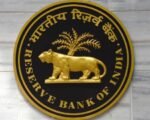Banks in Nigeria are breaching regulatory lending caps — and auditors say it’s not out of recklessness, but because the currency crash left them cornered.
Top auditors across the Nigerian banking sector are pointing fingers at the dramatic devaluation of the naira for pushing several financial institutions over the Central Bank’s Single Obligor Limit. The SOL rule is supposed to prevent excessive exposure to one borrower. But with foreign-currency loans ballooning in local terms, banks are finding themselves in regulatory hot water — even if they didn’t lend a single extra naira.
Foreign Loans Now a Headache in Local Currency
At a recent quarterly meeting in Lagos, the Association of Chief Audit Executives of Banks in Nigeria (ACAEBIN) openly acknowledged what many industry insiders have whispered for months: banks are trapped by foreign exchange dynamics they didn’t control.
Aina Amah, chairperson of ACAEBIN, explained how the naira’s plunge — from N465 to the dollar last year to roughly N1,600 this week — has distorted balance sheets. Loans that were perfectly compliant when signed in dollars two years ago now appear dangerously large in naira terms.
“None of the banks deliberately breached the SOL,” Amah emphasized. “But when the FX swings are this wild, it reconfigures the entire loan structure overnight.”
Put simply, imagine borrowing $10 million when the dollar was worth ₦450. That’s a ₦4.5 billion loan. But now, with the naira near ₦1,600, that same $10 million loan clocks in at ₦16 billion on paper. And if a bank has too many of those, it’s a problem.

How SOL Works — And Why It Matters More Than Ever
The Central Bank of Nigeria (CBN) uses the Single Obligor Limit to keep banks from taking excessive risks with large borrowers. It’s about concentration — no bank is allowed to lend more than 20% of its shareholder funds to a single borrower (or 25% for certain infrastructure lending).
These are the kind of rules that help prevent collapses like we’ve seen in other markets. They’re boring, but vital. Until now, they worked well.
But FX-induced distortions are testing the system.
Banks that previously stayed within the 20% threshold are now breaching it — without increasing exposure. It’s the value of the naira that’s doing the damage.
One executive from a tier-one bank put it plainly: “We didn’t lend more. The currency fell out from under us.”
The Numbers Are Brutal
The naira has lost about 245% of its value over the past 24 months, one of the worst depreciations in modern Nigerian economic history.
Here’s how that plays out in real numbers for the banking sector:
| Year | USD/NGN Rate | Value of $10M Loan in Naira | % Increase |
|---|---|---|---|
| June 2023 | ₦465 | ₦4.65 billion | — |
| June 2024 | ₦750 | ₦7.5 billion | +61% |
| June 2025 | ₦1,600 | ₦16 billion | +245% |
It’s no surprise, then, that foreign-denominated loans are setting off red flags.
Auditors Warn This Is Just the Beginning
According to ACAEBIN, this is a systemic issue. It’s not just one or two banks — it’s across the board.
“We expect more banks will report similar breaches unless a new framework accounts for the FX volatility,” said another senior auditor at the meeting, requesting anonymity due to regulatory sensitivities.
She added that while internal risk teams are recalibrating thresholds, “there’s only so much they can do when the currency devalues this fast.”
Already, banks are in talks with the Central Bank to reclassify certain exposures or seek temporary regulatory relief, especially for legacy loans.
Public Perception vs. Regulatory Reality
While the public may view banks as profit-churning giants — especially as sector profits soar — the reality inside boardrooms is more complex.
“There’s this narrative that banks are thriving while the public suffers,” said an executive from one commercial bank. “Yes, profits are up — but these FX shocks are stressing our capital structure, our compliance risk, and our asset books.”
To the average Nigerian struggling with food inflation and job insecurity, such explanations might sound tone-deaf. But the banking sector’s current regulatory headaches are real — and could get worse if the naira slides further.
Are Banks Prepared for More FX Shocks?
Banks have started taking defensive positions, but not all are equally prepared. Some have hedged against currency risk, others are exposed.
• Tier-one banks with international operations tend to have better FX risk management.
• Smaller lenders and those more reliant on import-heavy clients are more vulnerable.
• Exposure to oil and gas borrowers — whose revenues are in dollars — can ironically help mitigate risk, even though the sector is volatile.
Still, there’s a limit to how much internal controls can shield banks from macro-level currency depreciation.
“We didn’t budget for this level of naira collapse,” one auditor admitted. “Nobody did.”
Calls for Policy Adjustment Grow Louder
As banks scramble to stay compliant, many are calling for a rethink of how SOL is calculated — especially in a floating FX environment.
“Maybe it’s time to consider dollar-denominated caps or FX-adjusted benchmarks,” said a regulatory consultant in Abuja. “You can’t apply old formulas in a new economic reality.”
Others suggest a tiered SOL system — different limits for domestic vs. FX-denominated loans. So far, the Central Bank has not publicly signaled any changes.
But behind closed doors, those conversations are happening. Loudly.








